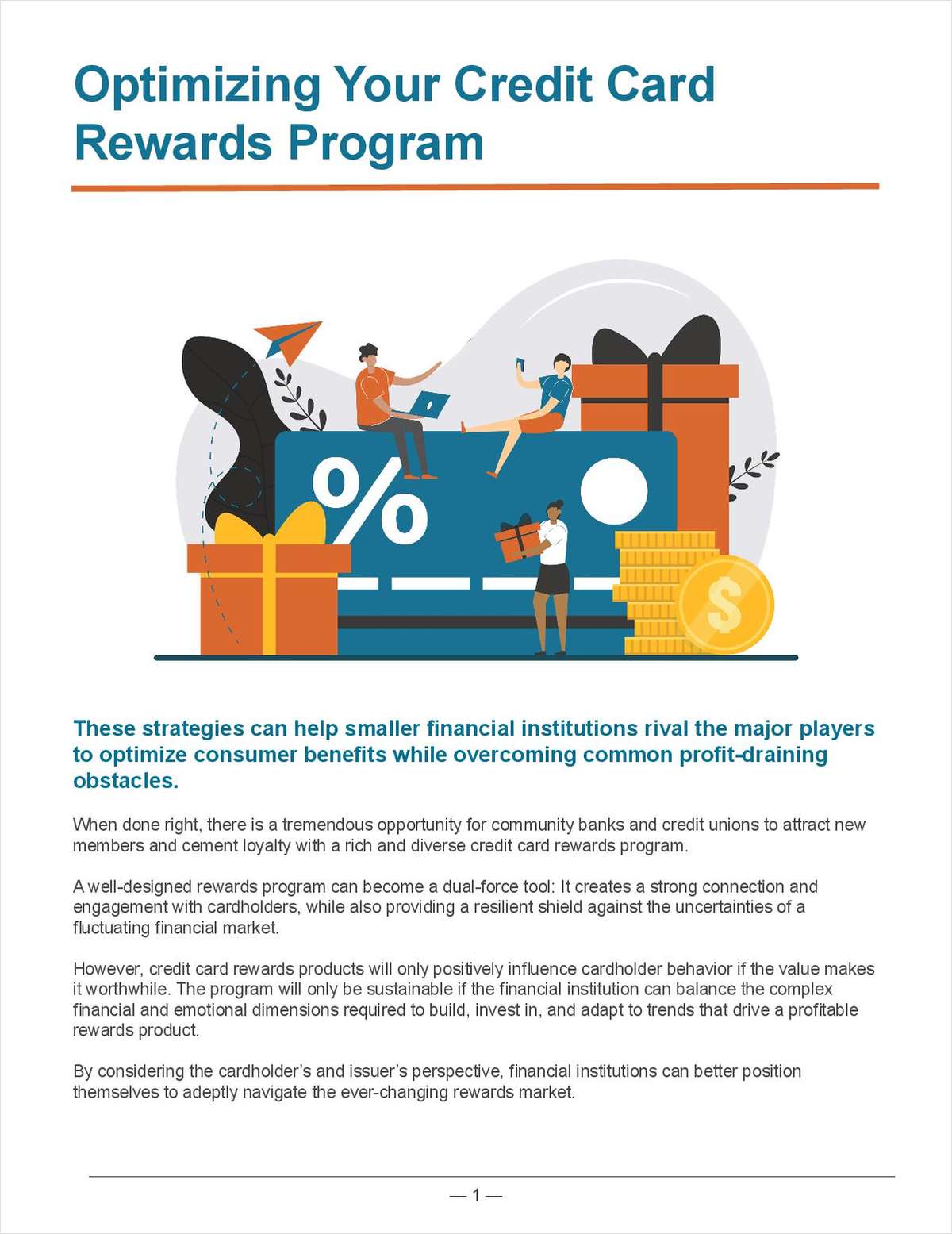Whether we like it or not, the credit card industry is in the middle of dramatic change. Every single issuer is being forced to re-examine the most basic assumptions in their program's design. We need to ensure that our credit card programs are not only compliant (or risk massive fines) but also that they are structured for the right balance of member value and long-term profitability.
Two factors have come together to create the perfect storm for credit card issuers, credit unions included.
First, the credit card industry will contract by as much as 30% according to some industry experts while consumer spending is both declining overall and shifting toward debit and other payment vehicles. Credit card issuers must recalibrate their expectations for their card programs: Growth cannot be the only goal or credit risk may increase to intolerable levels. Credit losses will not return to historic levels for quite some time (if ever), and programs will have difficulty generating the kinds of profits many came to rely on during happier times.
Second, the CARD Act of 2009. Like it or not, the act increases the burdens disproportionately for smaller issuers. The costs have been material (reprogramming front-end voice units, rewriting disclosures, updating Web sites, changing internal processing systems and more), but the prospect of $500 per account fines does much to concentrate the mind and your staff. What is perhaps not as clearly understood is the long-term impact on profitability the act will create for even those issuers who have long prided themselves on fair practices.
So, what can a credit union do now to protect this valuable asset, ensure suitable levels of profit are generated in the card program and continue to offer a fair and valued product to its members? While the full answer could fill this entire newspaper, the most urgent needs for all issuers include the following.
Re-examine pricing. The place that credit card receivables occupy on balance sheets has changed. Card portfolio pricing is now a concern for asset-liability balancing and long-term forecasting. This is no longer an asset that can be repriced at will, and, as such, the duration of the asset has changed from irrelevant to something akin to a fixed-rate mortgage. Some too easily believe that having a prime-linked product insulates them 100%, but a credit union may still find that it is receiving too low an APR for an account's risk level in today's market.
Even more critical is reconsidering a decision to remain in fixed-rate pricing. Some have decided to remain in fixed-rate pricing to maintain a competitive marketing advantage and may very well accomplish that goal. Unfortunately, in many conversations I am finding that this decision was not made through well-considered discussions at the executive and board levels but was delegated to card or lending managers. This is not a fair decision to force on those folks, who are asked to manage the card program well but cannot be expected to take responsibility for the implications of adding a long-term fixed-rate asset that will stick on the balance sheet for a very long time.
Update management reporting. The CARD Act ensures that changes to card programs will take several years to reach their expected impact, so it is critical to have the proper management reporting in place. Actionable reporting will allow the program manager to see unpleasant trends developing and react to them quickly. Many issuers rely on an annual review of the card program at a high level, often as part of an overall budgeting process. That will be insufficient going forward.
Expense management. In working with my clients, one of the most common questions to come up is, "How much does running my card program cost?" Very few have completed full cost studies pushing costs down to the product level and mistakenly accept that their costs are limited to what their processor charges them. With so little room to spare in most credit union income statements, doing a full (or at least reasonably close) cost analysis is important. Too often card issuers undercount the costs for their card programs leading to pricing decisions that end up with a subpar program. Sure, the members that take under-priced cards love it, but the other members are paying for it.
Hopefully, all credit union issuers recognize that the time to embrace the need to look anew at their credit card programs is now. Many consumers across the country will be looking for new credit card relationships as their bank-issued cards become more expensive (if they are not closed outright). Credit unions card programs are getting more attention than ever before and have a unique opportunity to capitalize on this moment. But remember, the big bank issuers may be many things, but they are not dumb. Let's not let our instinct to pillory them blind us to the fact that they may be trying to push their problems out their doors and into yours. But with a properly designed program and commitment of the resources to prudently manage it many credit union card portfolios can emerge stronger going forward.
Timothy Kolk is the owner of TRK Advisors. He can be reached at 603-924-4438 or [email protected]
Complete your profile to continue reading and get FREE access to CUTimes.com, part of your ALM digital membership.
Your access to unlimited CUTimes.com content isn’t changing.
Once you are an ALM digital member, you’ll receive:
- Breaking credit union news and analysis, on-site and via our newsletters and custom alerts
- Weekly Shared Accounts podcast featuring exclusive interviews with industry leaders
- Educational webcasts, white papers, and ebooks from industry thought leaders
- Critical coverage of the commercial real estate and financial advisory markets on our other ALM sites, GlobeSt.com and ThinkAdvisor.com
Already have an account? Sign In Now
© 2025 ALM Global, LLC, All Rights Reserved. Request academic re-use from www.copyright.com. All other uses, submit a request to [email protected]. For more information visit Asset & Logo Licensing.









